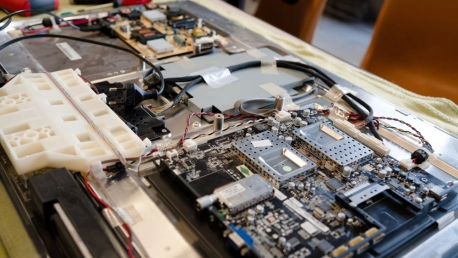Refurbished IT equipment has become increasingly popular lately, which is why the range of goods has expanded and more products can now be purchased—among them servers, printers and workstations. Most often, the equipment needed to set up an office requires serious investment, which can be optimized by choosing refurbished or second-hand products. Let’s see why refurbished IT equipment could be the best solution for many businesses.
The Difference Between New, Used and Refurbished Products
There is a wide range of refurbished equipment out there. The term “refurbished” is used mainly in the IT industry and it refers to used products that have been tested before being offered for sale. Refurbished products have had a previous owner, but are reconditioned by specialists.
In other words, refurbished equipment offers the same performance as new equipment, but at a lower cost. Rigorous testing is applied to all products, and the evaluation determines whether the equipment is fully functional and whether any components need to be replaced.
Typically, a used product is resold with zero or limited guarantee because they have not been checked and the vendor cannot risk offering a long guarantee. It is not recommended to make such purchases in a business environment.
Why Is Refurbished Equipment a Good Choice?
It’s not news that equipping an office often involves high costs, regardless of whether we’re talking about personal space or corporate offices. Among the most sought-after refurbished products are personal computers and laptops, which can be purchased at low prices and are in high demand among both home users and businesses.
When talking about advantages, the first benefit that comes to mind is the price. Regardless of the size of your business, whether you’re purchasing equipment for one employee or 100 employees, staying under budget is a top priority. You can buy refurbished equipment for 30% to 50% less than new equipment. Furthermore, computers and laptops come with operating systems already installed through the Windows Refurbisher program.
Another reason to consider buying refurbished equipment is performance. Refurbished servers and IT machine parts provide the same performance as new ones. According to a study conducted in 2020 by Techbuyer and the University of East London, the first stage of benchmark testing revealed that a new and a refurbished server (same manufacturer, same model) scored identically in performance. The test measured the energy and performance of CPUs, server RAM, and data center storage.
The COVID-19 pandemic has shown how important immediate stock is. Large and complex orders from hardware manufacturers can take a long time. Companies that sell refurbished products store the equipment directly in their facilities, and this enables fast turnarounds and prevents manufacturing waiting times.
Last but not least, refurbishment is ecologically friendly. When you choose refurbished electronics from certified vendors, you make a positive environmental impact, as the life span of existing devices is prolonged with no adverse effect on their functionality or reliability.
If Google Is Using Refurbished, Why Shouldn’t You?
Most companies focus primarily on computers and laptops. In some cases, servers may be needed and often printers and copiers are also required. In this situation, companies can choose refurbished equipment, which may or may not be used regularly.
For example: In 2016, 22% of the components Google used for machine upgrades were refurbished inventory, and 36% of the servers deployed were remanufactured machines.
“Google custom builds and remanufactures its own servers with refurbishing in mind from the start. But before any hard drives are removed from rotation, all data is overwritten. The override is then verified with a complete disk read, a process that ensures no trace of customer data can possibly remain on the hard drive. Then the decommissioned servers take a second lap in the circle of life—they’re dismantled into separate components (motherboard, CPU, hard drives, etc.), inspected, and prepped for use as refurbished inventory. Refurbished parts are used to build remanufactured servers with performance equivalent to brand new machines. In 2016, 36% of servers Google deployed were remanufactured machines. Server upgrades and repairs also tap the refurbished inventory pool”, according to the Circular Economy at Work in Google Data Centers study conducted with the Ellen MacArthur Foundation.
The Global Refurbished PC Market Size Is Projected to Reach $14,780 Million by 2027
According to a market study by 360 Research Reports, the global refurbished PC market size is projected to reach $14,780 million by 2027—up from $9,340.2 million in 2020—at a CAGR of 6.8% for the period between 2021 and 2027. Europe is the largest market, with a share of approximately 39%, followed by Asia-Pacific and North America. In terms of products, Refurbished Laptops is the largest segment, with a share over 84%. In terms of End User, Personal is the largest market, with a share over 60%.
Among the global key players of refurbished PCs are Apple, HP, Overcart, Reboot, Dell, Acer, Lenovo, ASUS, and Amazon.
Conclusion
Purchasing IT equipment can sometimes be very expensive, especially if you are on a tight budget. Choosing refurbished equipment could be the right solution for your business.









